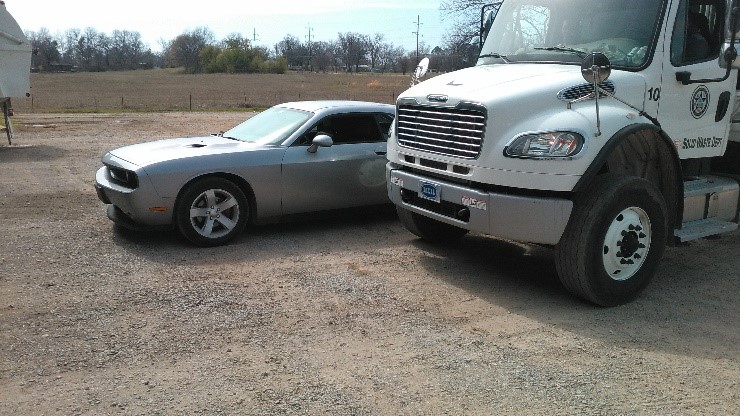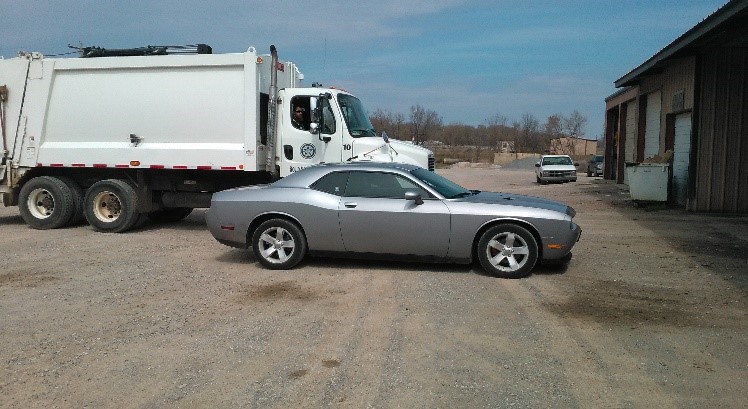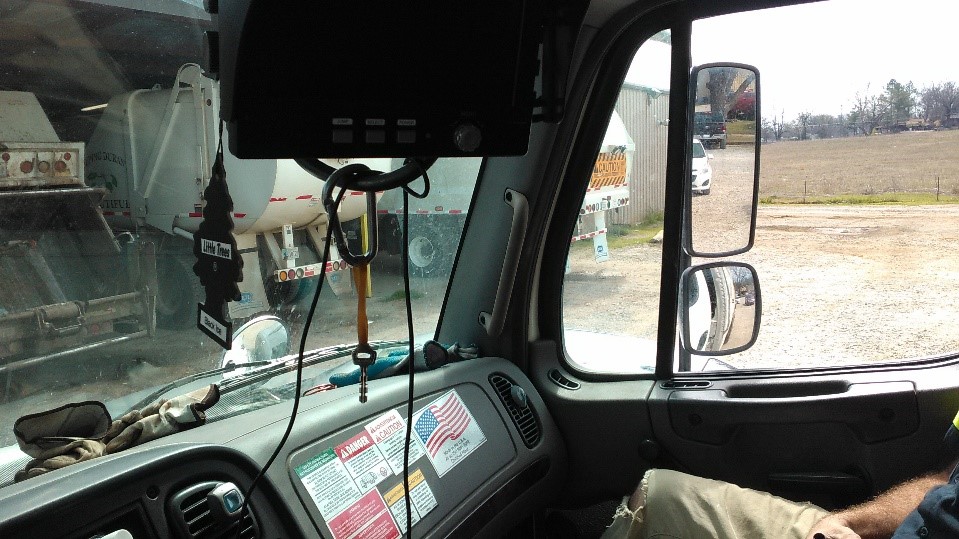According to the National Safety Council, one out of four vehicle accidents can be blamed on poor backing techniques. Backing accidents cause 500 deaths and 15,000 injuries per year in the United States. The use of safe vehicle backing techniques by municipal personnel can help reduced accidents while on the job.
Blind Spots: Know where they are. In a medium-sized truck, blind spots can extend up to 16 ft in front and 160 ft behind a vehicle. Drivers need to remember that mirrors can never give the whole picture while backing. In the photo below, the blind spot to the rear of the fire truck is 247 ft.
Think in advance: Don’t back your vehicle unless you must. Plan before you park. If possible, park along a curb, in an alley, at the gas pump or pull through a parking spot.
Back Slowly: Back your vehicle at less than 1 mph. If you do strike an object, driving slowly will limit damage.
Park Defensively: Don’t park near high traffic areas, for example at the entries of businesses; these areas are where you are most likely to be involved in an accident.
First-Pull-Forward: Back into your parking spot upon arrival. If you have parked forward in a parking space, at the time of departure, by the time you shut the door and click your seat belt a car or group of people could now be in your backing path.
Use Correct Backing Path: Only back up if you must. If you do back up, use the correct backing path: (listed from least hazardous to most hazardous) straight backing, backing using the driver's mirror (swinging to the left), backing using the passenger mirror (swinging to the right).
When backing, be cautious of front-end swing: When driving forward the rear wheels follow the steering axle; when backing, the front of the vehicle will swing wider than the rear axle. This swinging could result in the vehicle striking vehicles or other objects.
In the photos above, if the sanitation truck driver were to back up and swing right, the truck would strike the silver Camaro sitting next to it. You can see in the third photo that the car is not visible to the driver in the side-view mirror.
Use backing aides: At a minimum most vehicles have a rear-view mirror and side mirrors. Some vehicles have additional mirrors, backing sensors and/or backing cameras. Don’t focus on just mirrors or a backing camera, use all of the tools at your disposal to back safely.
Do a walk around: Walking around a vehicle gives a driver a firsthand view of the backing area and any limitations. They can check for children, soft or muddy areas, potholes and other dangers. In addition, they can also check for obstructions, low-hanging trees and wires, and other potential clearance-related hazards.
Every backing situation is new and different: Sometimes a driver visits the same location several times a day and should be watchful each visit for changes and any new obstacles.
Use a spotter: Drivers should use another person to help them when backing. The driver and spotter should use hand signals instead of verbal ones. Before using a spotter, agree on the hand signals to be used prior to backing. If you get a signal you don’t understand, stop and don’t continue until you understand the information the spotter is giving you. In addition, don’t have spotters walking backward while giving signals and don't place them in a caught-in-between hazardous situation (i.e. a backing sanitation truck and dumpster, or backing truck and a wall).
Long-Term Solutions to Safe Backing
Implementing backing policies/procedures can help reduce accidents and injuries. These are some considerations for backing policies:
Limit backing to a specified distance: Do not back more than 200 ft. If you must back further, pull forward to get in a better position to shorten your backing path.
First-Movement-Forward: Require all vehicles to back into parking spots upon arrival.
Require spotters for vehicles with poor driver visibility, such as sanitation, fire and dump trucks.
Shorten backing path and improve visibility in areas of constant backing, such as at sanitation transfer stations.
Installation of backing sensors and rear-vision camera systems in vehicles assists in limiting rear blind spots. Investing in rear-view camera systems for vehicles can put drivers in better visual control of the rear of a vehicle.
No amount of forward-driving experience can help a driver with backing a truck or other vehicle. All drivers need to practice safe backing techniques and limit backing to only when absolutely necessary.
Creation and support of a municipal-wide training program: The program should include a driver’s course to teach and review backing techniques, and also cover equipment usage, hand signals, dangers to avoid, and other risk-lowering topics.
*Special thanks to Albert Pierce (Solid Waste Director, City of Durant) & Stephen Coy (Fire Chief, City of Warr Acres) for their contributions to this article.






